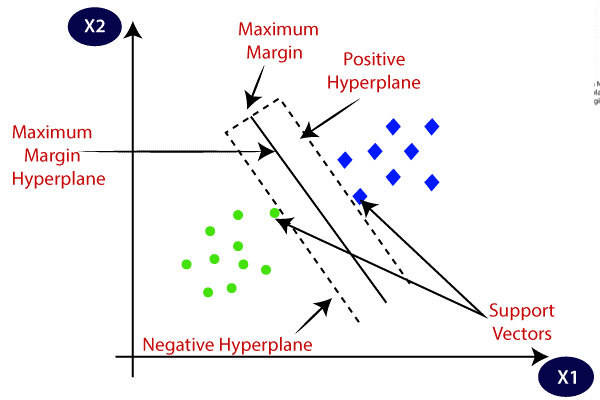A Hybrid Model for Sentiment Analysis Based on Movie Review Datasets
Main Article Content
Abstract
The classification of sentiments, often known as sentiment analysis, is now widely recognized as an open field of research. Over the past few years, a huge amount of study work has been carried out in these disciplines by utilizing a wide variety of research approaches. Due to the possibility that the performance of sentiment analysis may be impacted by the high-dimensional feature set, text mining demands careful consideration during in the construction and selection of features.The process of recognising and extracting subjective information from written data is referred to as sentiment analysis. Sentiment analysis enables companies to understand the social sentiment around their brand, product, or service by monitoring the conversations that take place in internet chat rooms. In order to categorise people's attitudes or sentiments, this study provides a hybrid model (Support Vector Machine, Convolutional Neural Network, and Long Short-Term Memory). The findings of using the network model to sentiment analysis on the movie review or amazon review datasets reveal that it is possible to gain a good classification impact by using the model. The preprocessing is used for text mining, the removal of punctuation, and the generation of vocabulary, also uses GLOVE for vectorization and TF-IDF algorithms for better feature extraction. The results that were proposed were compared with various base models such as KNN, and MNB, amongst others, which demonstrates that the hybrid model performs better than other models.
Article Details
References
K. Kowsari, K. J. Meimandi, M. Heidarysafa, S. Mendu, L. Barnes, and D. Brown, “Text classification algorithms: A survey,” Information (Switzerland). 2019, doi: 10.3390/info10040150.
P. Sunagar and A. Kanavalli, “A Hybrid RNN based Deep Learning Approach for Text Classification,” vol. 13, no. 6, pp. 289–295, 2022.
S. M. Mohammad, S. Kiritchenko, and X. Zhu, “NRC-Canada: Building the state-of-the-art in sentiment analysis of tweets,” 2013.
D. K. Gupta, K. S. Reddy, Shweta, and A. Ekbal, “PSO-asent: Feature selection using particle swarm optimization for aspect based sentiment analysis,” 2015, doi: 10.1007/978-3-319-19581-0_20.
C. N. Dos Santos and M. Gatti, “Deep convolutional neural networks for sentiment analysis of short texts,” 2014.
Y. Kim, “Convolutional neural networks for sentence classification,” 2014, doi: 10.3115/v1/d14-1181.
S. Poria, E. Cambria, and A. Gelbukh, “Deep convolutional neural network textual features and multiple kernel learning for utterance-level multimodal sentiment analysis,” 2015, doi: 10.18653/v1/d15-1303.
C. N. Dang, M. N. Moreno-García, and F. De La Prieta, “Hybrid Deep Learning Models for Sentiment Analysis,” Complexity, 2021, doi: 10.1155/2021/9986920.
B. Alsukhni, “Multi-Label Arabic Text Classification Based on Deep Learning,” 2021, doi: 10.1109/ICICS52457.2021.9464538.
V. Rajpoot, R. Agrawal, A. Chaturvedi, and K. Goyal, “An Empirical Study of Sentiment Analysis on Movie Review using Machine Learning based Classification Approach,” 2021, doi: 10.1109/ISCON52037.2021.9702471.
H. B. Dogru, S. Tilki, A. Jamil, and A. Ali Hameed, “Deep Learning-Based Classification of News Texts Using Doc2Vec Model,” 2021, doi: 10.1109/CAIDA51941.2021.9425290.
A. C. Mazari and A. Djeffal, “Deep Learning-Based Sentiment Analysis of Algerian Dialect during Hirak 2019,” 2021, doi: 10.1109/IHSH51661.2021.9378753.
H. Srinidhi, G. M. Siddesh, and K. G. Srinivasa, “A hybrid model using MaLSTM based on recurrent neural networks with support vector machines for sentiment analysis,” Eng. Appl. Sci. Res., 2020, doi: 10.14456/easr.2020.26.
R. Parveen, N. Shrivastava, and P. Tripathi, “Sentiment classification of movie reviews by supervised machine learning approaches using ensemble learning voted algorithm,” 2020, doi: 10.1109/IDEA49133.2020.9170684.
A. A. Wadhe and S. S. Suratkar, “Tourist Place Reviews Sentiment Classification Using Machine Learning Techniques,” 2020, doi: 10.1109/I4Tech48345.2020.9102673.
A. Tariyal, S. Goyal, and N. Tantububay, “Sentiment Analysis of Tweets Using Various Machine Learning Techniques,” 2018, doi: 10.1109/ICACAT.2018.8933612.
Y. Ekanata and I. Budi, “Mobile application review classification for the Indonesian language using machine learning approach,” 2018, doi: 10.1109/CATA.2018.8398667.
M. U. Salur and I. Aydin, “A Novel Hybrid Deep Learning Model for Sentiment Classification,” IEEE Access, 2020, doi: 10.1109/ACCESS.2020.2982538.
S. Kumar, M. Gahalawat, P. P. Roy, D. P. Dogra, and B. G. Kim, “Exploring impact of age and gender on sentiment analysis using machine learning,” Electron., 2020, doi: 10.3390/electronics9020374.
A. Sadeghian, “Bag of Words Meets Bags of Popcorn,” CS224N Proj., 2013.

